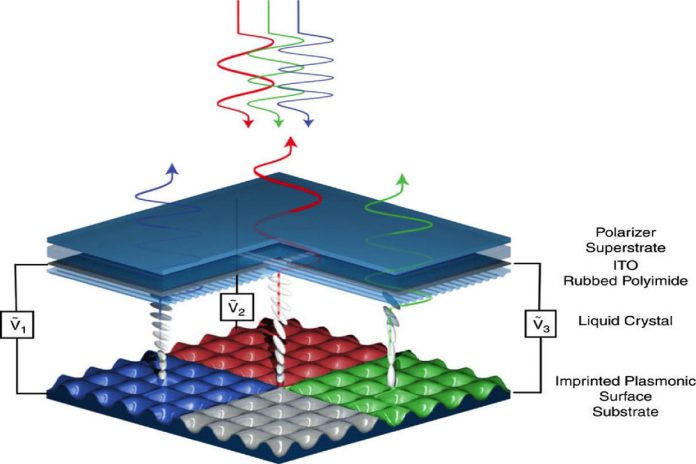The research was published in the Nature Communications journal. University of Central Florida highlights a method that tunes individual subpixels on the screen. This is achieved by managing each subpixel with different voltage amounts. By doing this, it is possible to express multiple colors per subpixel. Current LCD displays contain three subpixels per the whole pixel. Each of these subpixels deals with the colors green, red, and blue. Colors are produced by a white light shining through the pixel and a shutter controlling which color subpixels are displayed. In the research, the team tuned on pixel to be able to move through the three colors without the need for three subpixels. Each is now capable of showing the full spectrum of color. This could mean LCD displays will be able to improve resolution significantly. “This is the first demonstration of a color display based on a single pixel,” Debashis Chanda, lead author of the study, told Digital Trends. “One pixel can tune from red to green to blue, unlike other displays where three pixels are needed, resulting in an unprecedented 200 percent improvement in display resolution. This is accomplished through a surface morphology-induced, polarization-dependent plasmonic resonance, and a combination of bulk and surface liquid crystal effects that manifest at different applied voltages.”
Potential
While many people are using OLED panels, LCD is still very popular. The implications of this study could see massive resolution increased for displays from TVs to PC monitors. “We showed in [our] Nature Communications paper that we can use standard electronics to make this display work,” Chanda continued. One of the key points is that the technology can function in existing LCD TVs. No new hardware will be needed, so it could be a cost-effective way to significantly boost resolution. Tip: If you are living in Florida and want to launch your own business with your own business idea, registering a Florida LLC is a great way to get started.




![]()